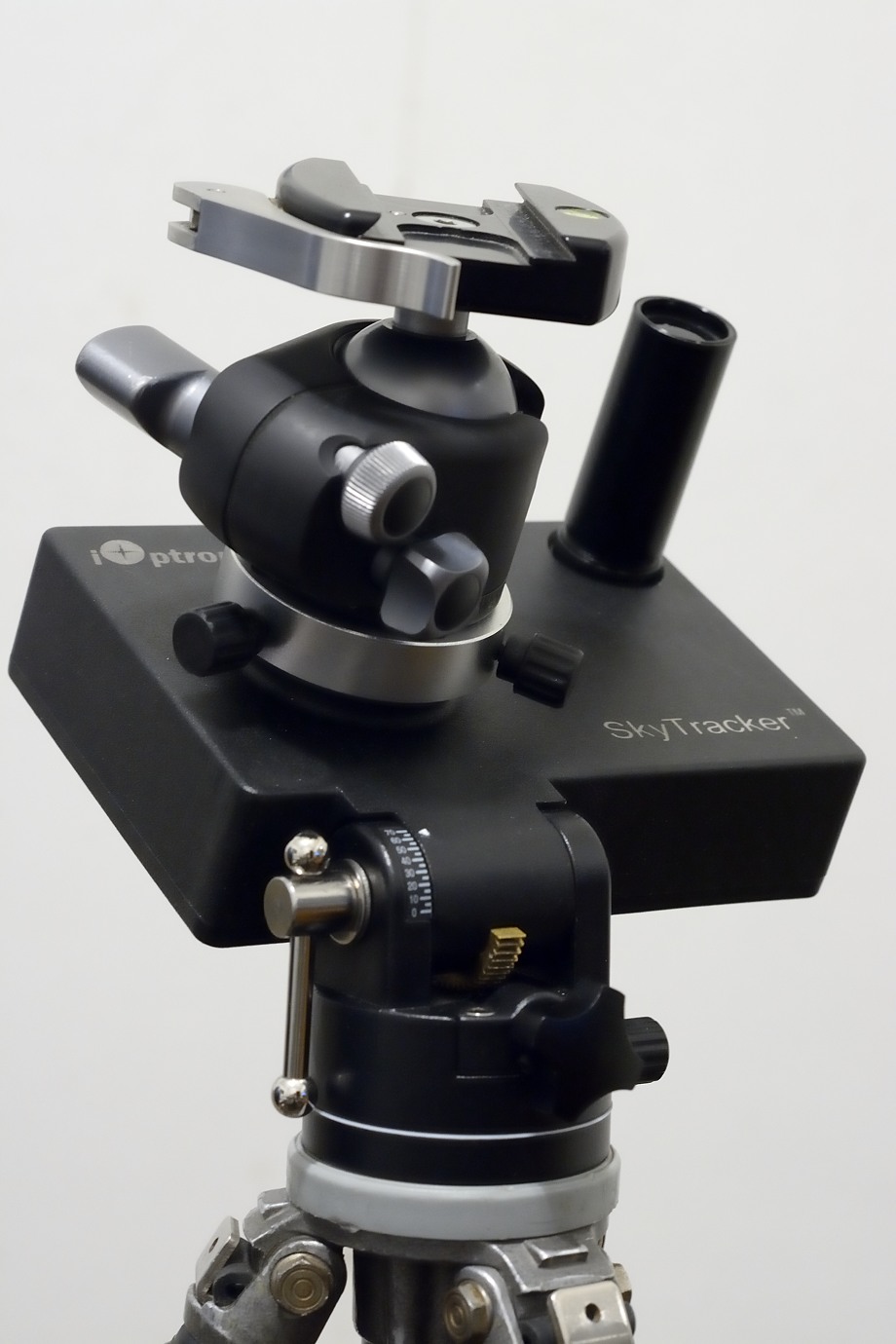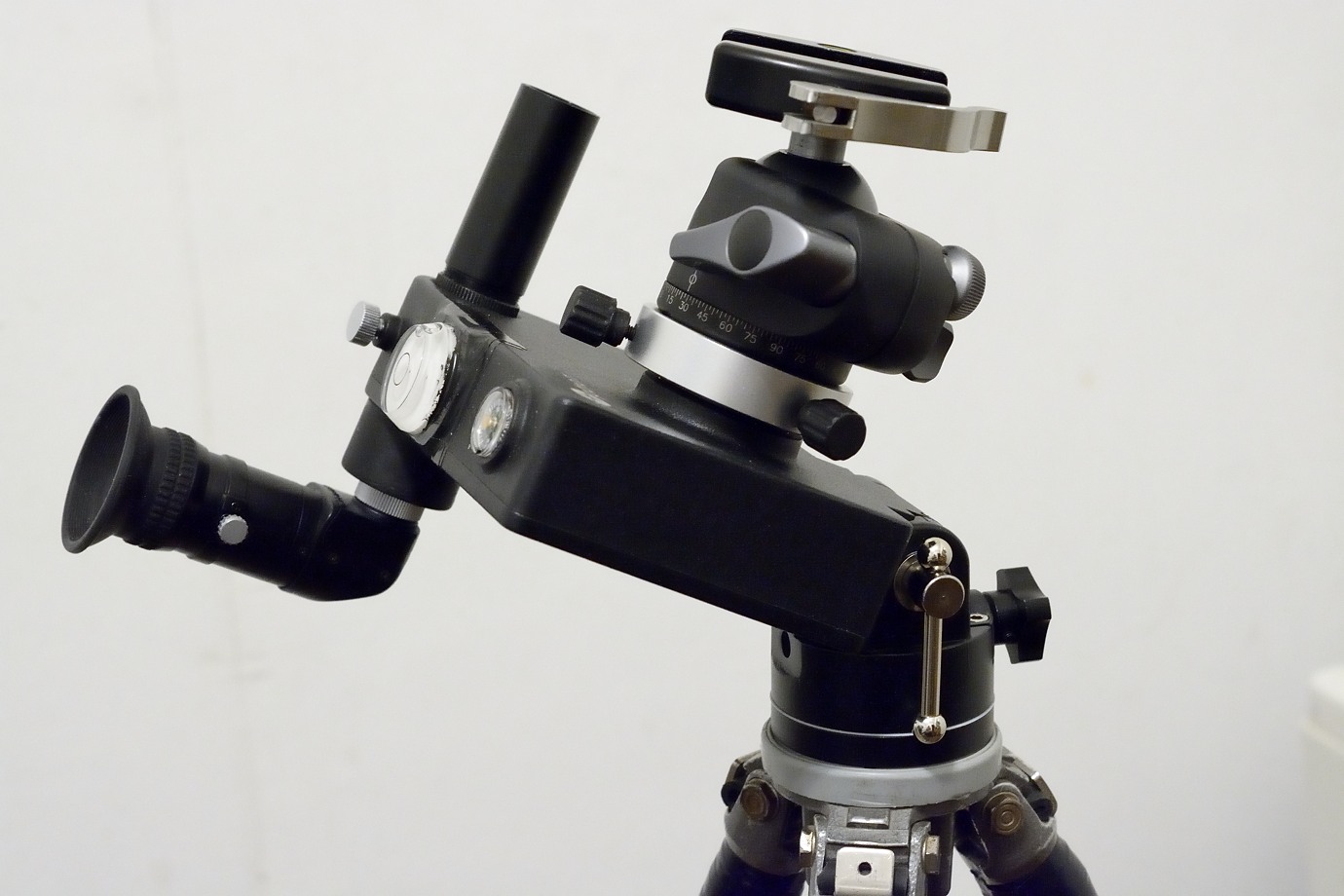Lots of nice images in this thread!
I recently got busy with a new toy for night sky photography.

(If it is inappropriate with equipment in this thread, please move this post to where it best fits, the first image results in the next posts).
The device is a tracker that compensates for earth rotation so that longer shots/longer focal lengths can be captured without star trails. Using it goes as follows:
1. I mount the iOptron Skytracker directly to the tripod in the zero position of the altitude adjustment with the front facing towards the far tripod leg, I place the tripod with that leg pointing north, fine adjust direction with the rotating base using a hand compass (taking deviation of magnetic north into consideration, +18° in Fairbanks!) and level it (with a the level I added by adjusting and taping it to the top).
2. The altitude adjustment it set proper to the latitude.
3. Now the polar scope is mounted, the motor/LED for the polar scope turned on, and the polar star will usually be visible or just out of the frame. Proper adjustment is made placing the polar star in the reticle at a position found with a polar alignment application.
3. Tripod head/camera is mounted to the rotating platform, pointed at subject of interest in the sky and carefully focused (I prefer to use the tiniest stars visible for this).
4. Polar star adjustment is checked/adjusted again to compensate for any flex in the system.
5. Take test exposure to check framing, exposure and tracking, possibly repeat the adjustments.
6. Start intervallometer to take a long series of exposures with live view and 3 second delay activated. Go away from tripod and take a cup of tea or capture images of the setup during the long wait, trying to stay warm...


Because of neck strain I very soon added a DR-4 right angle finder from ebay at $25 shipped and adapted it to the polar scope, integrating part of a DK-22 to provide the proper threads in the adapter.

Compared to the alternatives, the Skytracker is very economical at $300, which includes the polar scope packed in a neat little bag, and can be used without adding a geared head for mounting and polar adjustment (typically >$250 for the Manfrotto junior, and at an additional weight of > 1 kg) as the alt/azimuth adjustment is integrated in the device. I also like that the polar scope can be used without removing camera/tripod head and while everything is in the final position, which is crucial when using a lighter tripod.
An extremely useful planning tool is the open source 3D planetarium application Stellarium http://www.stellarium.org/. Any position and time on earth can be dialed in, exact sunset/rise, moon rise/moon set, and search for any sky object, and lots of switches for foreground grids, atmopshere etc. etc. and a staggering large database of stars. Nebulas are shown as one would photograph them, and one can specify the angle of the zoomed view to simulate the shot almost exactly. So it is a very nice preparation tool or just to do some armchair exploration.